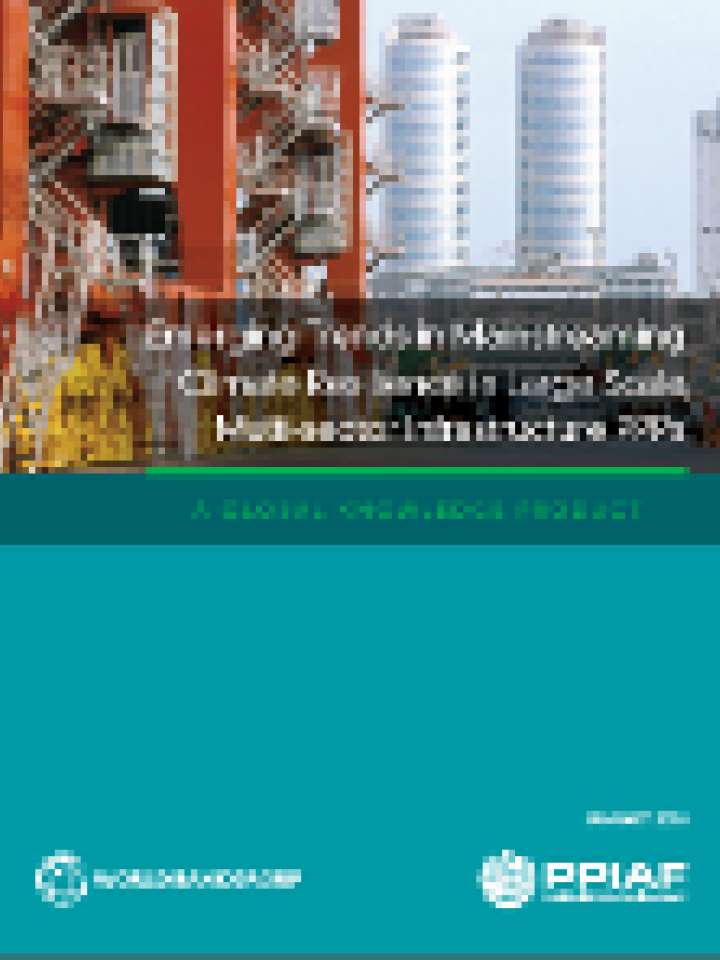Emerging trends in mainstreaming climate resilience in large scale, multi-sector infrastructure PPPs
This report presents a synthesis of insights on climate risks to infrastructure and on how to implement public-private partnership (PPPs) for infrastructure, building on interviews with experts from multilateral development banks, analysis of national policy frameworks for PPPs and adaptation, and a literature review, to identify where these topics do and should overlap.
There is increasing need for decision makers involved in the public investment process including that of PPPs to both understand how climate change risks could affect their investments and how to mitigate those risks through financial instruments. The paper aims to engage PPP practitioners as well as governments and their advisors in a broader discussion on how a paradigm shift in thinking will be needed in the way Infrastructure PPPs are planned, developed, procured and implemented.
Key findings include:
- PPPs are increasingly used to finance and operate infrastructure in many countries, particularly in developing regions, in conditions where other financing options are limited. The advantage of PPPs is that governments and private investors share investment risks by allocating risks to the parties best able to manage them.
- Climate change presents a dynamic risk factor for infrastructure projects. It alters the environmental conditions that infrastructure projects need to withstand, shifting the calculus for how infrastructure should be planned, designed, financed, constructed, and maintained.
- Resilience-building adaptations to infrastructure are not expensive if incorporated early in the project lifecycle, with research demonstrating average incremental costs of 1 and 2 percent for infrastructure projects. What is more, the cost of financing adaptation measures at the early stages of an infrastructure project is small compared to other factors that can influence the future costs of building or repairing infrastructure. Preventive adaptation actions now can mitigate or avoid high future costs as climate change worsens.
- Climate finance instruments for adaptation are growing in scale, funding, and flexibility. They provide financial incentives (concessional loans, grants) and technical assistance to help deliver resilience- building measures.
Explore further

